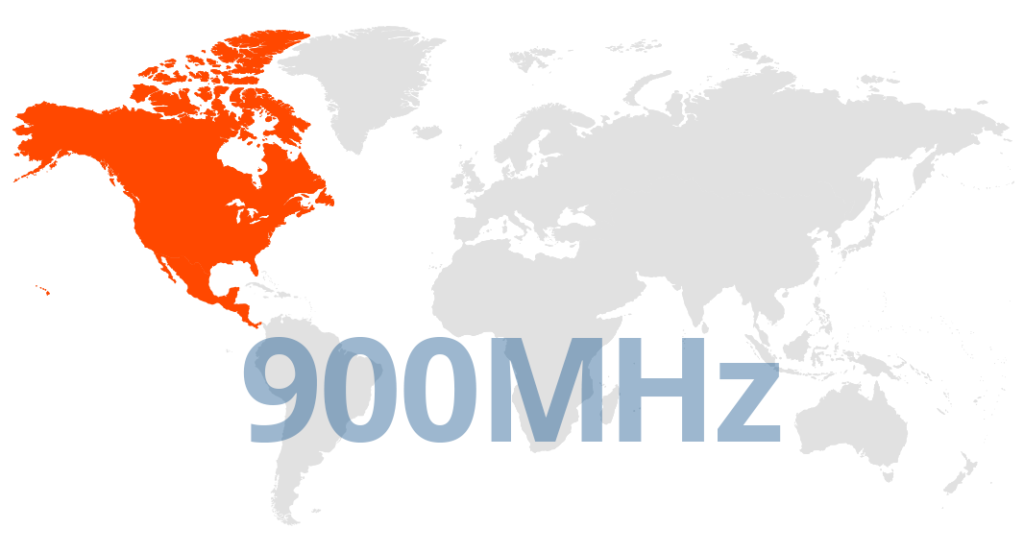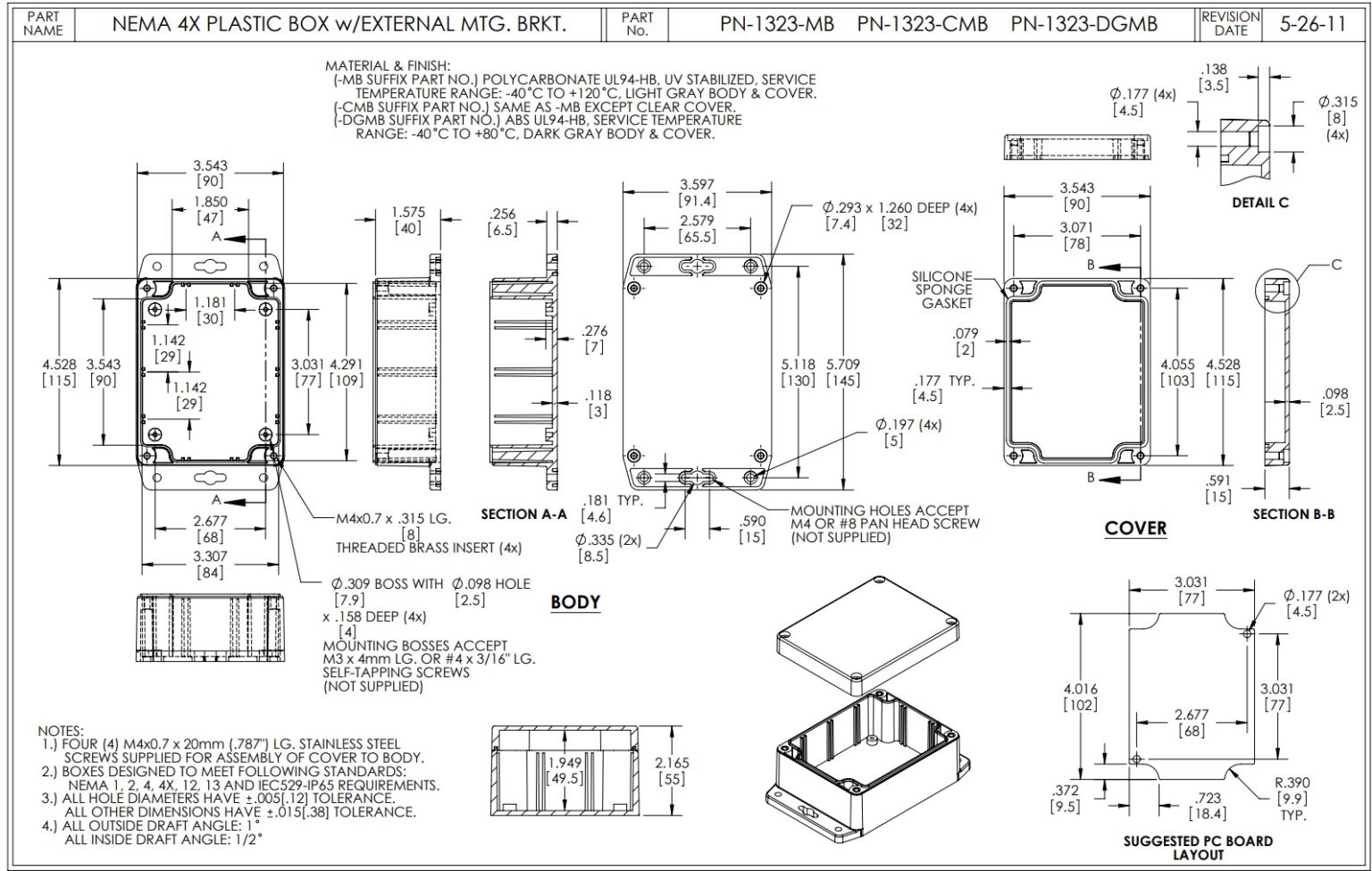1 Channel Industrial IoT Long Range Wireless Ultrasound Vibration Sensor
Highlights
- Industrial Grade 1-Channel Ultrasound Vibration Sensor
- Resonant frequency Fres = 37 [kHz] +/- 1 [kHz]
- Measuring range 20 to 100 [dBµVRMS]
- Resolution 0.5 [dB𝜇𝑉RMS]
- Ideal For Motors, Pumps, and Gear Box Predictive Maintenance
- 2 Mile Line-of-Sight Range with On-Board Antenna
- Superior LOS Range of up to 28 Miles with High-Gain Antennas
- Interface to Raspberry Pi, Microsoft® Azure®, Arduino and More
- Wireless Mesh Networking using DigiMesh®
- Open Communication Protocol for Easy Software Integration
- Validates and Retries Lost Communication Packets
- Ultrasound Sensor Probe is sold Separately
Long Range Wireless Sensors
Our long range wireless enterprise series sensors are an easy to use and reliable start to any data aggregation application. This video will demonstrate how they work, what they do, and how to use them.
1-Channel Industrial IoT Long-Range Wireless Ultrasound Vibration Sensor
The Industrial IoT Ultrasound Vibration Sensor from NCD – a high-performance solution engineered explicitly for industry-leading predictive maintenance applications. Integrated with a wireless mesh networking architecture, it delivers an impressive range of up to 2 miles. The sensor employs a high-precision, dual-channel 16-bit ADC, capturing vibration data at user-specified intervals and wirelessly transmitting the recorded data to remote modems and gateways.
Designed with a focus on energy efficiency, the sensor seamlessly transitions into an ultra-low power sleep mode between data sampling periods. Its integrated 16V buck-boost power supply negates the requirement for an external power source, enhancing its versatility.
Powering the sensor are six AA batteries that, coupled with an operational capacity of up to 500,000 wireless transmissions, afford an estimated battery lifespan of 10 years. This lifespan depends on environmental conditions and the frequency of data transmissions. The sensor also supports optional external power from a 6-32VDC supply for added flexibility.
Its superior range, high precision, extended battery life, cost-effectiveness, and fortified security features position this sensor as an exceptional tool for predictive maintenance tasks in various industrial contexts, exceeding the standards set by traditional devices.
IoT Ultrasound Vibration Sensor Applications
- Rotating Machinery Health Monitoring: The sensor can monitor vibrations in rotating equipment such as motors, pumps, fans, or turbines. This real-time monitoring helps identify potential failures, such as bearing wear or imbalance before they escalate into costly breakdowns.
- Gearbox Condition Monitoring: It can detect changes in the vibration patterns of gearboxes, often indicating issues such as gear wear, misalignment, or lubrication problems.
- Conveyor System Monitoring: The sensors can track the health of conveyor systems in industrial setups, predicting faults in rollers, bearings, or drive mechanisms.
- HVAC System Monitoring: They can be used in Heating, Ventilation, and Air Conditioning (HVAC) systems to monitor and predict issues related to rotating parts like fans or compressors.
- Wind Turbine Monitoring: In wind energy setups, the sensor can predict maintenance requirements in the rotating parts of wind turbines, ensuring their optimal performance.
Sensor Data Overview
NCD IoT Sensors send a lot more than just sensor data. For instance, a unique serial number is sent so you can always identify a particular sensor on the network. A Node ID is also included, which a single byte of data that you can use for anything, such as the floor of a building or to help identify which group a sensor belongs to. Also included in the data packet is a firmware version, battery level, and sensor type. This allows your software to positively identify and manage the health of NCD IoT wireless sensors. While signal strength data is also available, it is handled in a different way, and is not included in the sensor data packet (but rest assured, signal strength data for each sensor is available). Please see the Resources tab to see detailed information on the data structure of this device.
Good to know…
NCD wireless sensors transmit data and require a receiver. There are many options available for receiving data from NCD IoT devices, which will be discussed in much greater detail below. We highly recommend at least one USB Modem for the purposes of sensor configuration (available during checkout). Also, our LabVIEW software is typically used for advanced sensor configuration, which is located in the “Resources” tab above.
How long Will the Batteries really Last?
Most NCD IoT Sensors are rated for 300,000 to 500,000 transmissions until the batteries become so weak they are unreliable. You could spread these transmissions out over a 10 year period and send 50,000 transmissions per year. This would allow up to 136 transmissions per day, or about 5 transmissions per hour (for a 500K sensor, or 3 per hour for 300K sensor). If you only need the batteries to last 3 years, you could send 166,666 transmissions per year, or about 456 transmissions per day (about 19 transmissions per hour for a 500K sensor). As you can see, battery life is really up to you. By altering advanced settings in the NCD IoT sensor, you have control over longevity. Please note the 500,000 transmission rating is for premium alkaline batteries. NCD ships all sensors with premium Lithium batteries, which include a ultra-wide temperature range that typically lasts in excess of 600,000 transmissions for some sensor types. These batteries weigh less than half of alkalines, and they work in the freezer! A word of caution though, putting a sensor in configuration mode will drain the batteries very quickly. It’s important to configure your sensors and exit configuration mode as soon as possible or use a external power supply during configuration (if supported by the sensor). The table below indicates how many Transmissions Per Hour (TPH) your can expect from different sensors over a lifespan of up to 10 years.
| Battery Life: | 3 Months | 6 Months | 1 Year | 2 Years | 3 Years | 5 Years | 10 Years |
|---|---|---|---|---|---|---|---|
| 300K Sensor | 136 TPH | 68 TPH | 34 TPH | 17 TPH | 11 TPH | 6 TPH | 3 TPH |
| 400K Sensor | 180 TPH | 90 TPH | 45 TPH | 22 TPH | 15 TPH | 9 TPH | 4 TPH |
| 500K Sensor | 228 TPH | 114 TPH | 57 TPH | 28 TPH | 19 TPH | 11 TPH | 5 TPH |
| 600K Sensor | 272 TPH | 136 TPH | 68 TPH | 34 TPH | 22 TPH | 13 TPH | 6 TPH |
TPH = Transmissions per Hour
The Truth About Battery Life
Under the best of circumstances, the best non-rechargeable batteries commonly available today are limited to a 10 year non-working shelf life in a room temperature environment. Factors such as actual usage, temperature, and humidity will impact the working life. Be wary of any battery claims in excess of 10 years, as this would only apply to the most exotic and expensive batteries that are not commonly available. Also note that most battery chemistries are not rated for use in extreme temperatures. NCD only uses the best Non-Rechargeable Lithium batteries available today, which are also rated for use in extreme temperatures and have been tested by our customers in light radioactive environments. Lithium batteries offer a 10 year maximum expected shelf life due to limitations of battery technology. NCD will never rate sensor life beyond the rated shelf life of the best batteries available today, which is currently 10 years.
How Do I Change Settings and Examine Raw Sensor Data?
Using our long-range USB wireless modem, users can expect easy operation over a virtual COM port at 115.2K baud. Simply open the virtual COM port of the USB modem and watch data stream in. Optionally, we offer a Wireless receiver that operates over Ethernet. Data from NCD sensors will appear over TCP/IP on port 2101. Simply open a TCP/IP socket, port 2101, to the IP address of the Ethernet modem and see your data stream in to your local area network. We have developed LabVIEW® software for each sensor to change advance sensor settings using both Ethernet and USB modems. Alpha Station also allows display of sensor readings as well as limited configuration (this feature is still in development). Of course gateways are also available for sending data to popular cloud platforms such as Amazon® AWS® IoT, Microsoft® Azure® IoT, and Losant (more information below). We take software samples seriously, so be sure to to check out the “Resources” tab to see code samples for Raspberry Pi, Visual Studio, LabVIEW®, Arduino, Python, and more.
What Frequency Do I Need?
Range and Frequency of NCD Wireless Sensors
During purchase, you will see three frequency options. Not all options are legal for use in all areas, so it’s important to make the right selection during purchase. We will build your product and accessories based on the options chosen. Here, we will explain these options in much greater detail, but please check your local laws BEFORE purchase.
900MHz for North America (U.S., Canada, and Mexico)
If you are located in North America, the 900MHz Option will provide the longest range currently supported with the best penetration through walls, buildings, industrial equipment, and trees. This option is also the best choice for long range applications.

900MHz Wireless Sensor Range
The official Line of Sight rating for this option is 2 Miles with included antennas or 28 Miles with high-gain antennas. These distances are characterized for direct line of sight applications with no obstructions. Real-world range will vary greatly depending on surrounding buildings, trees, and other objects that may cause reflections or interfere with the transmission. 900MHz has excellent RF penetration characteristics, and we have successfully completed installations in excess of of a half mile on a automotive factory floor with active robots in between. We have also seen excellent penetration in mild radioactive installations making this a possible candidate for use in nuclear energy applications.
We suggest contacting Digi.com for a high-gain antenna recommendation if required. Please check your local laws before choosing this option.
868MHz for Europe Only

If you are located in Europe, the 868MHz Option is the longest range choice available at this time. This option offers better penetration through walls, buildings, trees, and industrial equipment than 2.4GHz. The official line of site rating for this option is 14.5km using 2.1dBi antennas. Please check your local laws before choosing this option.
2.4Ghz for Worldwide Use
The 2.4GHz option should be chosen if 900MHz and 868MHz are not legal for use in your country. This option is now certified for use worldwide, including Europe, United States, Japan, Australia, Brazil, and South Korea. Please check your local laws before choosing this option just in case 2.4GHz is not legal in your area.
Not Sure?
If you are unsure of which sensor option to choose, please contact us. We may be able to help determine which sensors are legal for use in your area.
Mechanical Drawing

Wiring Diagrams
Essential
- 1 Channel Industrial IoT Long Range Wireless Ultrasound Vibration Sensor Brochure
- 1 Channel Industrial IoT Long Range Wireless Ultrasound Vibration Sensor API Overview
- 1 Channel Industrial IoT Long Range Wireless Ultrasound Vibration Sensor Quick Start Guide
- 1 Channel Industrial IoT Long Range Wireless Ultrasound Vibration Sensor User Manual
- 1 Channel Industrial IoT Long Range Wireless Ultrasound Vibration Sensor Datasheet
- Long Range IoT Wireless Sensor FAQ
Documentation Downloads
Not for use in outdoor applications or for use in excessive temperature conditions. Prolonged freezing will prevent batteries from functioning until thawed, using extended temperature range industrial batteries may improve the useful temperature range. Extended freezing applications should use a full-time powered solution. Prolonged exposure to extreme humidity conditions may damage this device. The sensing element is rated for use for 5 years and may be replaced. Exposure to high temperatures may cause the batteries to leak, causing permanent damage to this device. NCD Warranty does not cover battery corrosion or use in excessively smoky environments under any circumstances.




